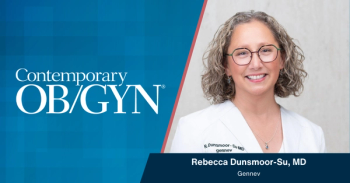
March of Dimes reports increase in maternity care desert prevalence
Amanda Williams, MD, MPH, FACOG, Interim Chief Medical Officer at March of Dimes, discusses the reported increase in the number of US counties with no obstetric care providers.
Contemporary OB/GYN:
Hi, I'm Celeste Krewson with Contemporary OB/GYN, and I'm here with Dr. Williams to discuss the recent March of Dimes 2024 report on maternity care deserts. Do you want to introduce yourself?
Amanda Williams, MD, MPH, FACOG:
Hi, yes, I'm Dr. Amanda Williams. I am the Interim Chief Medical Officer at March of Dimes and a practicing ob-gyn.
Contemporary OB/GYN:
So, to get started, can you talk a bit about the trends in maternal and infant care discussed in the new report?
Williams:
Sure. So, in our new March of Dimes maternity care deserts report, we are seeing that there are increasing number of counties in the United States that have no obstetric care providers, meaning ob-gyn, family practice doctors that practice OB, nurse midwives, and no hospitals or certified birth centers where patients can deliver. So unfortunately, since our last report, 2% more counties have become maternity care deserts, for a total now of over 35% of counties in the United States. So, this really is a critical issue in terms of access to appropriate care for healthy moms and babies.
Contemporary OB/GYN:
So, what are some short- and long-term health concerns raised by the new data?
Williams:
So, we know that patients who live in these maternity care deserts have worsening maternal and newborn health outcomes. For example, patients who are in these maternity care deserts are less likely to have adequate prenatal care that we know is associated with the best outcomes. We also have seen that approximately 13% more of patients in maternity care deserts compared to full-service counties have preterm birth. So, it's not just that we're identifying these areas. We're actually associating them with suboptimal outcomes as well.
Contemporary OB/GYN:
And with this in mind, what are some steps that could be taken to improve care in these regions?
Williams:
So, there are steps that we can be taken on the policy side and also on the programming side. So, visa V policy, we would love to see expansion of Medicaid for the full year postpartum in all 50 states, increasing Medicaid coverage to 138% of the poverty level. Improved payment mechanisms for obstetric care, so really thinking about value based payment, where financial incentives are also tied to clinical outcomes. We'd also love to see telehealth being optimized, because that's a way to get care to people who have limited access, and from the workforce perspective, see policy measures put in place so that nurse midwives can practice at the top of their scope, at the top of their licensure. And then as we need even more physicians taking care of obstetric patients, having more training for obstetric services from family practice doctors, in addition to expanding midwife access, can be very impactful as well. Then finally, on the programming side, we see things like the March of Dimes Mobile Health Center, which brings health out into communities through mobile busses, is another way to expand that access as well.
Contemporary OB/GYN:
That all sounds great. We're just about ready to wrap up, but is there anything you want to add first?
Williams:
I would add that, just like in the natural world, deserts still have beautiful things that exist in them. There are 2.3 million potentially birthing people who live in these areas designated as maternity care deserts. There are communities, there are potential collaborators, public health departments, so that if we are going to take care of patients in this space, we have to be able to reach out and work together with the organizations that are there.
Contemporary OB/GYN:
Well, thank you for speaking with me today.
Williams:
Sure, my pleasure.
Newsletter
Get the latest clinical updates, case studies, and expert commentary in obstetric and gynecologic care. Sign up now to stay informed.











